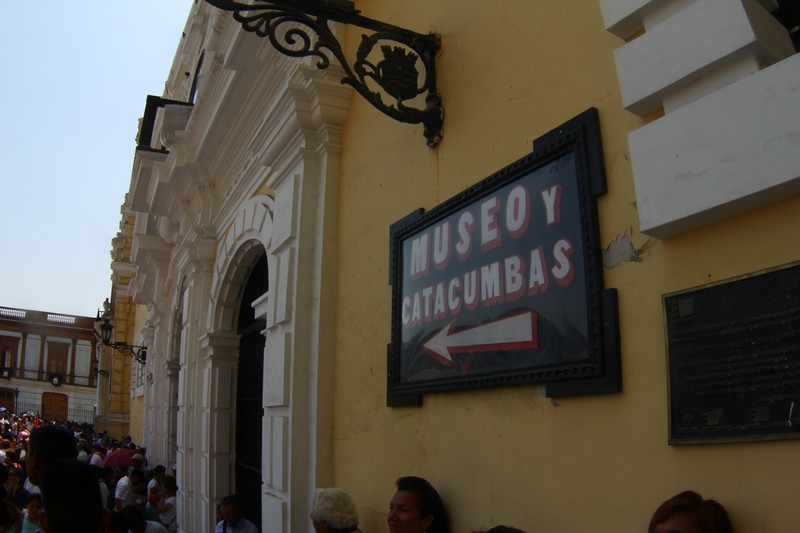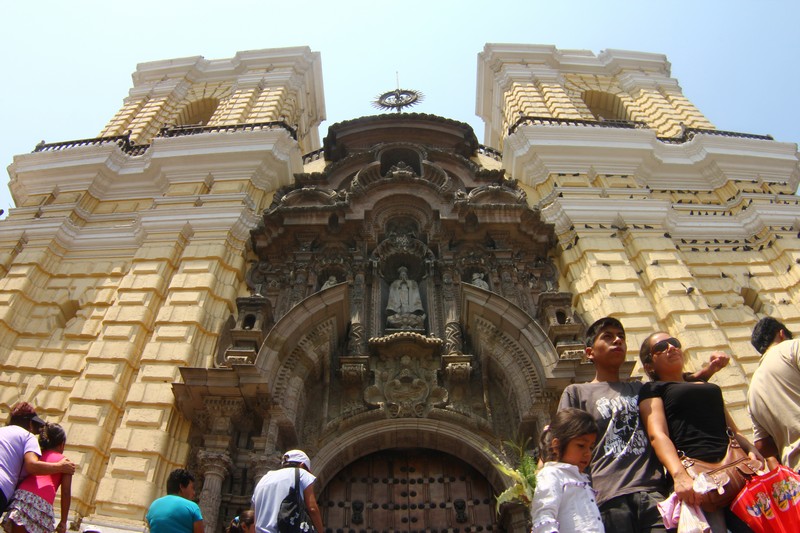
The Monumental de San Francisco de Lima is one of the most important religious, cultural and artistic centers of Peru and America.
In 1988, UNESCO declared the Cultural Heritage of Humanity, which was extended in 1991 to the Historic Center of Lima for its originality and the concentration of 608 historical monuments built in the viceroyalty.
The history behind the Monument of San Francisco
After the foundation of Lima on January 18, 1535; Extremadura Francisco Pizarro drew a design and distributed the land to the city. By relinquishing The Franciscan Order, Fray Francisco de la Cruz erected a small Ramada on a plot in the neighborhood of Santo Domingo, which he used as a chapel.
After a while Father De la Cruz had to leave, and as there was another Franciscan in the valley, the site was abandoned.
Pizarro then added what he had given to the Dominicans and Franciscans and spent another for the site now occupied by Chapel Miracle. Francisco de Santa Ana, the Guardian of the Order, came to Lima in 1546. He was surprised to find the site occupied by Don Sebastian Sanchez de Merlo and his wife and Don Cristobal de Burgos.
 Father Santa Ana prosecuted these people before the religious courts. Conservative Judge Fray Tomas de San Martin founded the National University of San Marcos, the oldest in America returned the property.
Father Santa Ana prosecuted these people before the religious courts. Conservative Judge Fray Tomas de San Martin founded the National University of San Marcos, the oldest in America returned the property.
Fray Francisco de Santa Ana built a modest little church which was then enhanced and extended into a Convent by the Viceroy of Peru Andrés Hurtado de Mendoza, Protector of the Order.
Over the period of the next century the temple was subject to a series of arrangements and decorations that ended up making it a wondrous art colony.
However the construction was not very strong. In 1614 the architect and greater worker convent, Fray Miguel de Huerta, warned that the pillars of the Church had very little foundation and were placed on gravel. On February 4, 1656, a landslide brought down the Temple San Francisco, and destroyed it's artistic riches and there was untold damage and all the efforts made for building it for centuries ended in ruins.
Commissioner General Fray Francisco de Borja hired the Portuguese architect Don Constantino de Vasconcellos and alarife Lima Manuel de Escobar and he entrusted them with the responsibility to build a new church on the same site.
The foundation stone was laid by the Viceroy Luis Enriquez de Guzman on May 8, 1657. In 1669 he took over the work from the new Commissioner General of the Order of Cervela, Fray Luis and managed to complete the work in five years period.
The new temple was inaugurated with great ceremony on October 3, 1672. The repairs continued inside the convent, which had also suffered some calamity, until 1729. The church has the title of Minor Basilica, concendido by Pope John XXIII in 1963.
Structure of the Monument of San Francisco
Below the chapels of the church there are the crypts of San Francisco, which are a series of underground vaults. These were used until the early nineteenth century and served for the burial of members of fraternities and sororities.
In 1947, its galleries and passages that were closed for a long period of time were opened for performing excavation, cleaning and light fixtures. The catacombs were opened to the public in 1950.
On your way you will see flat vaulted passages linked by arches. The floor that is made of brick and stone and mortar has rectangular graves where the coffins were placed one above the other, separated by land and quicklime. The lime accelerates the decomposition process, prevents epidemics and odors.
During the tour of the catacombs, various bones such as skulls, femurs, tibias and fibulas, are observed in majority, as they are the most resistant bones of the human body.
There are also holes or ossuaries that are intended to absorb seismic waves and which are ten meters in depth.
The convent of San Francisco de Lima, also known as the Great San Francisco or San Francisco de Jesus is located at the intersections of Jiron Ancash and Jiron Lampa in the Historic Center of Lima.
For any further details please visit: www.museocatacumbas.com
Hours of Operation:
Every day from 9:30 am to 5:30 pm
Cost:
General public S / 7.00
Students S / 3.50
Children S / 1.00



